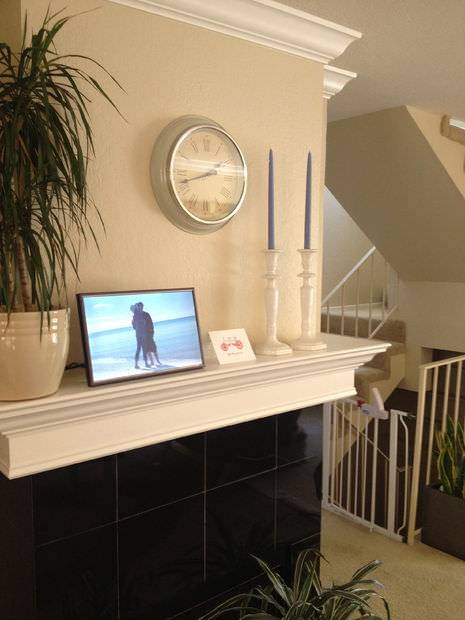Raspberry Pi, the affordable, credit-card sized computer, has inspired tinkerers everywhere. Originally designed to get kids interested in computing, it has also developed a following among programmers looking for a smaller, cheaper medium for projects.
In our introduction to Raspberry Pi, we listed ten simple project tutorials for beginners. But beginner tutorials are just the tip of what Raspberry Pi devotees have developed. Still more projects take the Pi’s computing power to the limits and show exactly what kinds of impressive feats this tiny device can pull off.
Here are twelve tutorials for taking your Raspberry Pi to the limit. You’ll find that you can automate your home, design your own devices, and perhaps even save a lot of money (that is, if you don’t suddenly feel the need to buy twelve new Raspberry Pis).
Overclock Your Pi
Normally overclocking, the process of making a computer operate more quickly or powerfully than recommended by the manufacturer, is not advised. But the Raspberry Pi Foundation knows its users too well to forbid it, and even offers suggestions on how to do it without voiding your warranty. This tutorial shares the frequencies you’ll need to know to get going.
Synced Music And Christmas Lights
A programmer known as ChivalryTimbers programmed his Raspberry Pi to synchronize MIDI music and his Christmas lights. The programmer has since linked a way to do the same process, but with the more common mp3 music format. The thorough tutorial includes everything he needed for the project, including no less than 50 feet of electrical wire.
You can see his lights flashing to the tune of Star Wars in the video:
http://www.youtube.com/watch/Fb8107XZ8oI
Humidity And Temperature Sensor
Chris Baume quickly discovered that home brewing your own beer is pretty difficult when you don’t have a thermostat in your house. So he connected his Raspberry Pi to a $2 DHT11 sensor. Now even when he’s not home, he can check the exact temperature and humidity in his brewing room via an Internet address—though, sadly, that doesn’t necessarily mean he can do anything about it if the temperature starts fluctuating.
Adafruit, an online electronics-education and parts site, also offers a tutorial for more generalized Pi humidity sensing.
Weather Station
Why stop at humidity and temperature? Here’s a tutorial for programming your Pi to record everything from rainfall to wind speed by rigging it up to a Maplin weather forecaster. From there, you could even program the Pi to automatically update a website with the weather conditions. Combining both science and tech, this could make an ideal school project.
Digital Picture Frame

Instead of buying a pricey digital picture frame at your local electronics store, you can make one for half the cost and double the features with Raspberry Pi. This Instructables tutorial outlines a frame that displays not just photos, but also movies, musics, and weather reports. Better yet, project author Andy Jagoe said he built it in just a couple of hours.
Gaming Device
First, a caveat: It’s quite illegal to emulate licensed games—and developers like Nintendo take it very seriously. But if you’re interested in playing free indie or fair use games, it’s easy to set up your Pi as a gaming console. Here are just a few free games you can legally download.
Mobile Robot
Ordinarily, getting into robotics can be a huge monetary investment. But with Raspberry Pi, you can build your own remote-control robot for $150 or less. Linux User offers detailed tutorials on both building the robot using Linux—and then writing a Python program to control it from any Internet connected device. (A digital copy of the magazine tutorial will set you back about $6, though.)
Don’t want to use Linux? Instructables offers tutorials for building Pi powered robots in both Python and ROS (Robotic Operating System).
Supercomputer

A single Raspberry Pi is about as powerful as a Pentium 2 with graphics on par with the original XBox. Connect 64 of them together, like one University of Southampton professor did, and you have some serious power at your fingertips.
Professor Simon Cox put out a tutorial on how to make a 64-node (or more) supercomputer by racking that many Raspberry Pis. One recommended technique: Build your racks from Legos.
Home Automation System
Combine a Raspberry Pi, an Arduino, and a Node.js program, and you’ve got an efficient way to control and monitor any device in your home that runs on AC power. You could turn your lights or TV on and off, or if you want to get more advanced with parts and programming, set up the Pi to turn lights off when it senses a temperature shift.
Digital Camera
Build a digital touchscreen camera for $126 and only four pieces of hardware (including your Pi) with Phil Burgess’ video tutorial on Adafruit. It’s held together with rubber bands and not exactly slick, but what’s that compared to using a camera you made with your own hands?
Touchscreen Tablet
Who needs a pricey iPad when you can build a Raspberry Pi touchscreen tablet to your exact specifications? Andre Hitchman wrote a complete tutorial for doing so with a Chalkboard Electronics touch screen. Amazingly, there are only seven steps—though, to be fair, the resulting “tablet” isn’t exactly portable, festooned as it is with lots of dangling wires and loose components.
Landline
Why pay for a landline when you have a Raspberry Pi? That’s what this tutorial argues, and it shows you how to substitute Pi and Google Voice for your current landline provider. You can make free calls, but it’s important to note that you won’t have the ability to make 911 emergency calls with this tutorial. But that’s what your smartphone is for.
Photos via Philip Burgess, Andy Jagoe, and Glenn Harris

















